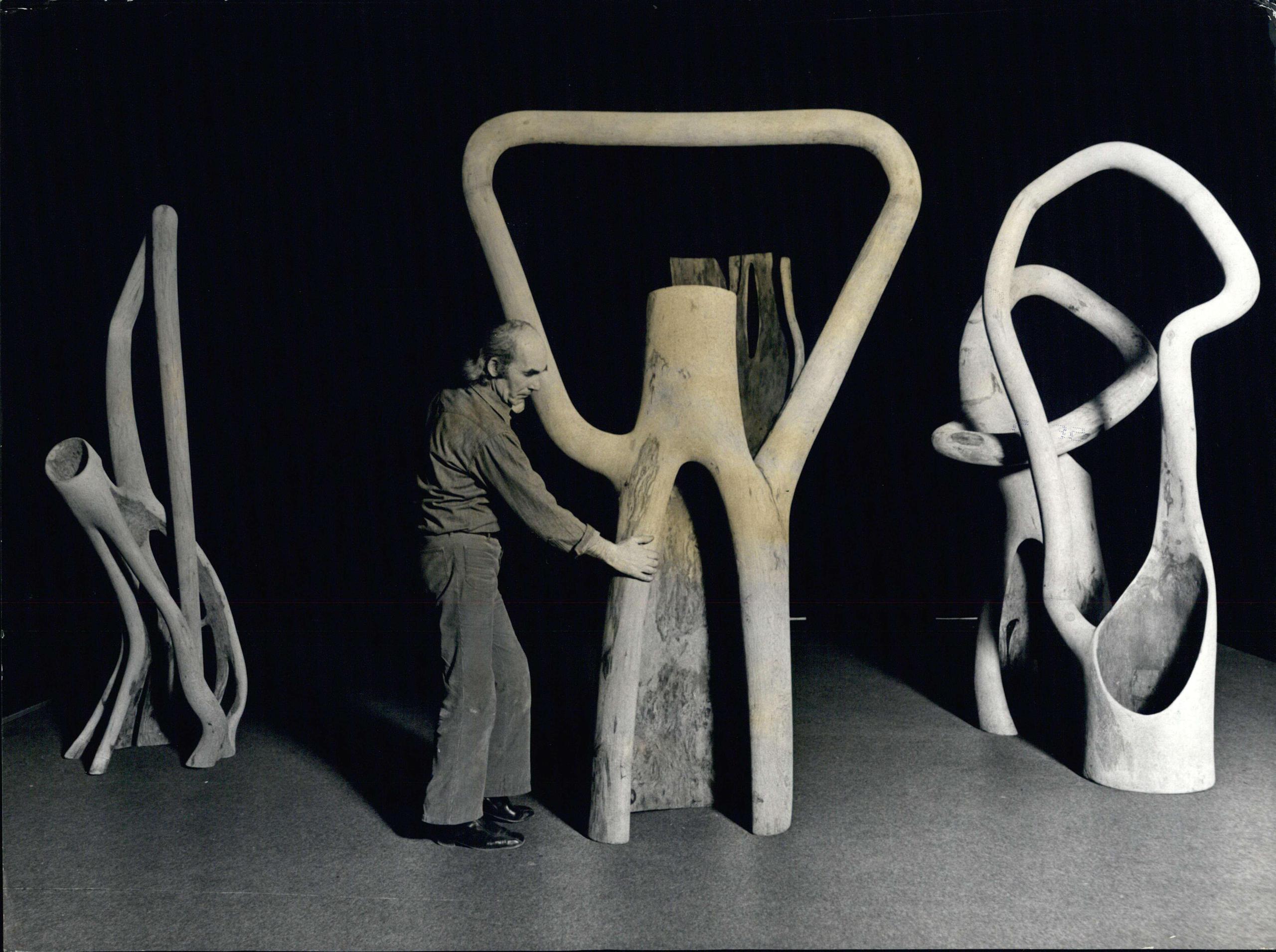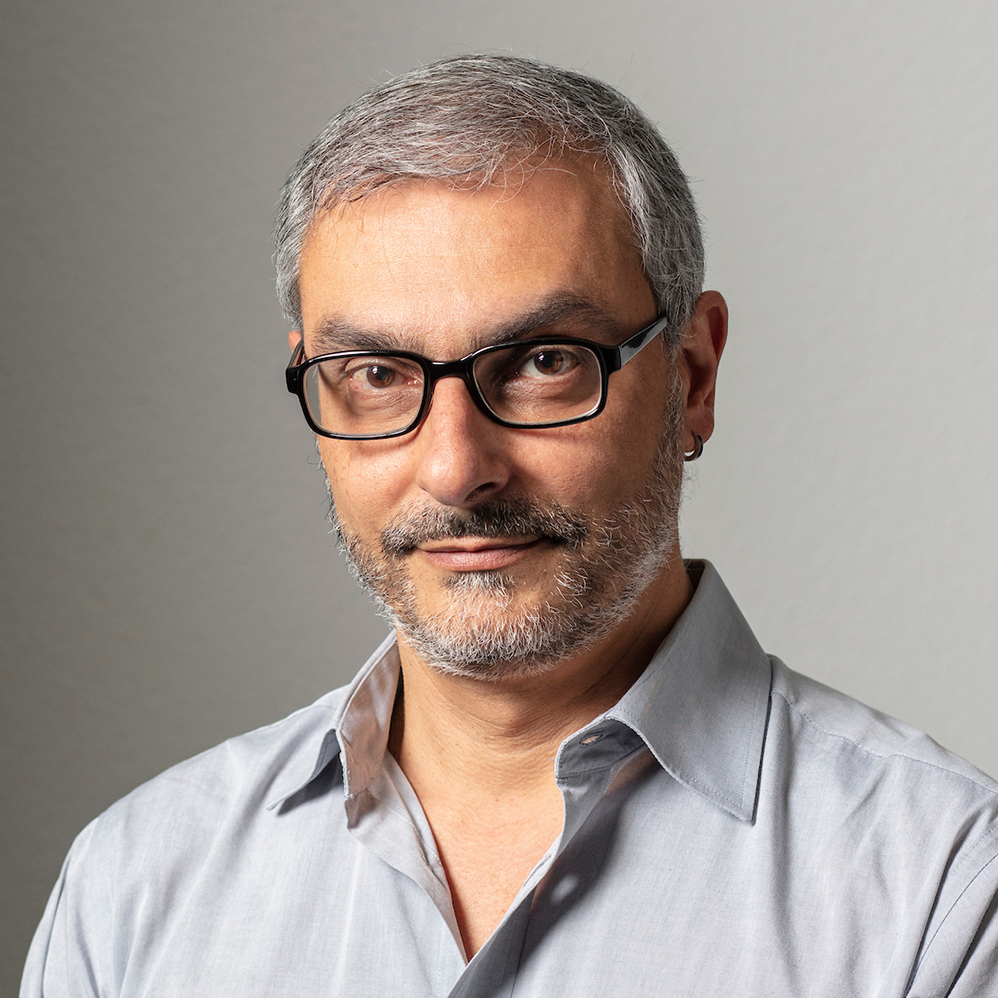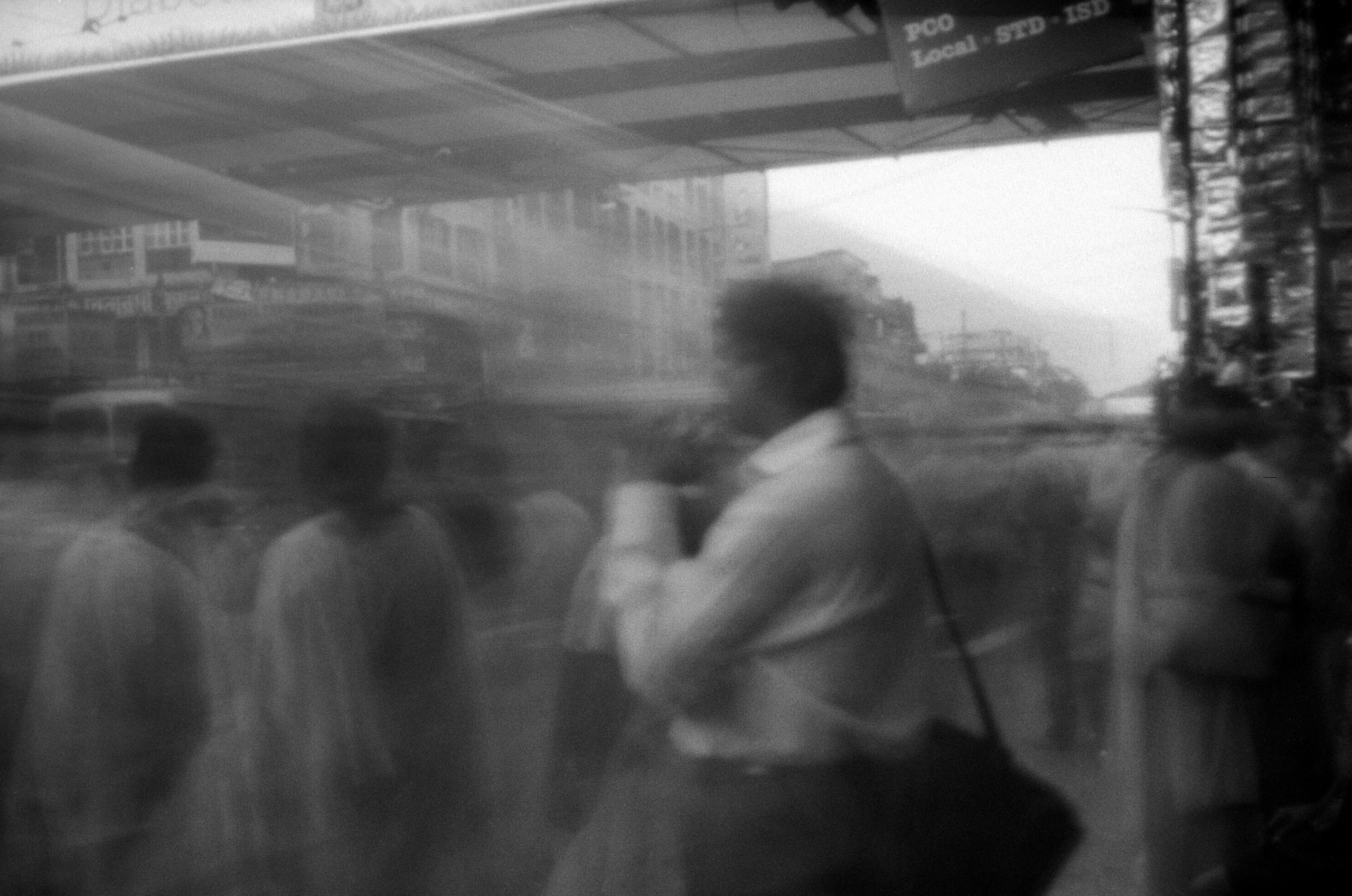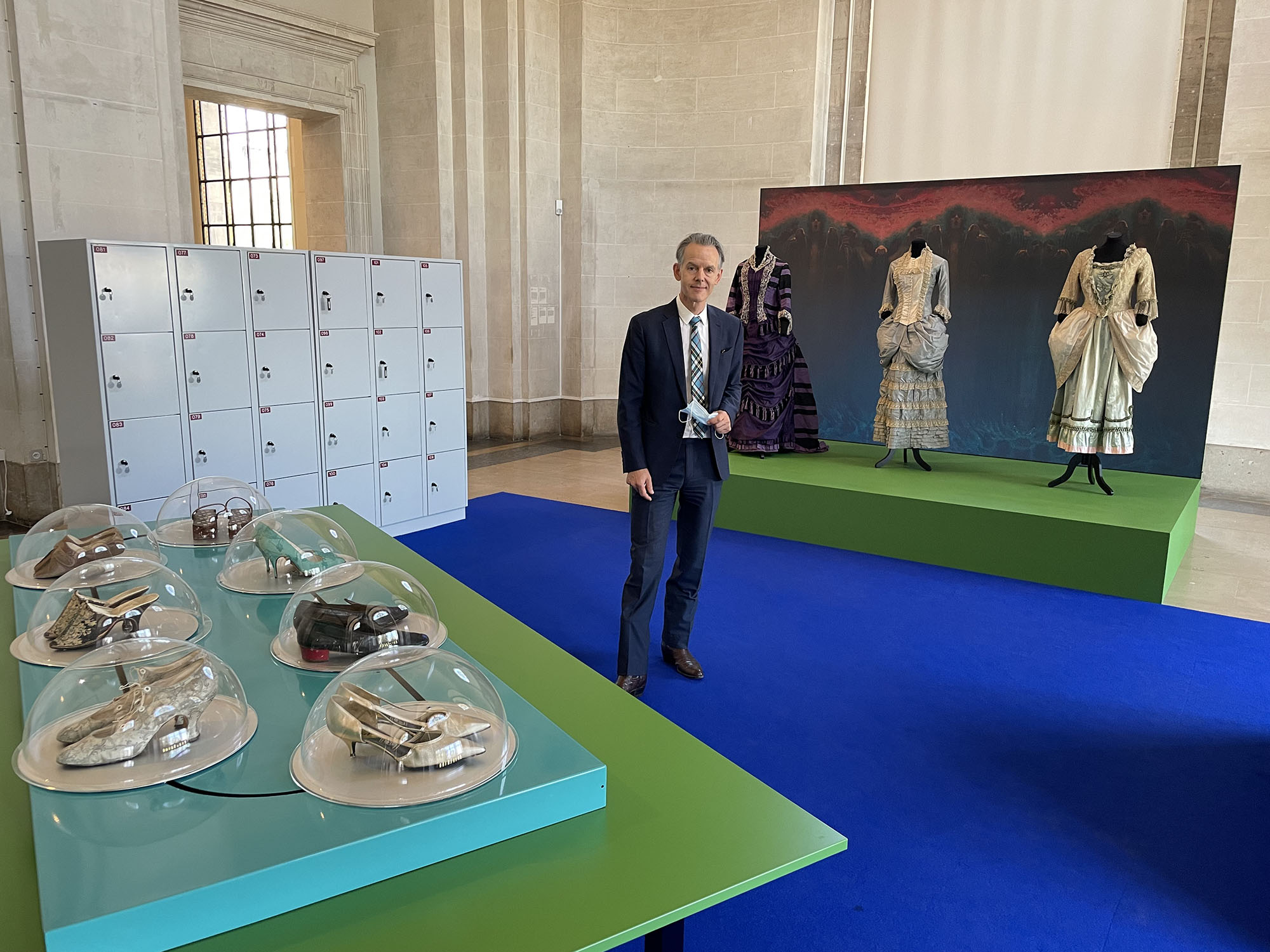Sounds of a burning forest bring back the spirit of a Swiss genius
The Burnt Instruments Orchestra (BIO), one of the highlights of Culturescapes festivalExternal link that runs until December 1, creates music from the silent witnesses of the destruction of the Amazon forest. It also marks the return of the spirit and genius of Walter Smetak to his native Switzerland.
While this text was being written, 200,000 acres External linkof Amazon rainforest were burnt down, and the same amount will be set aflame in the time it takes you to read this article. This daily scale of destruction has become so banal that it is no longer news. Nonetheless, artistic initiatives outside the mainstream, such as Culturescapes, still strive to raise the awareness of the present and constant threats assaulting not only nature but also people, indigenous or not, whose livelihoods depend on the natural resources being destroyed.
Burnt and dead wood is also the material used by Marco Scarassatti and Lívio Tragtenberg to construct the musical sculptures featuring in their Burnt Instruments Orchestra. The Brazilian duo of composers, brought to Switzerland by the Culturescapes festival, spent two months in the remote village of Scuol, canton Graubünden, building their sound sculptures with wood sourced locally. After the first presentations in the cities of Chur and Bellinzona mid-October, they are performingExternal link today and tomorrow (Oct. 21 and 22) in the Museum Tinguely, in Basel, where their inventions are meant to raise awareness on the plight of the rainforests.
The music is the sound of the forest, the crackling of the fires, but the experience is also visual and tactile. Viewers are invited to touch and play the musical sculptures, and “get their hands dirty with the soot of the burnt wood”, says Scarassatti, who is also a researcher in musical education and lecturer at the Federal University of Minas Gerais (Belo Horizonte, Brazil).
His partner in the project, Lívio Tragtenberg, is a veteran musical explorer. He has composed dozens of soundtracks for film and theater, mainly in Brazil and in Germany, where he spent many years working in the prestigious Volksbühne in Berlin with stage director Johann KresnikExternal link.

More
The making of the Burnt Instruments Orchestra
The Smetak connection
The orchestra was conceived and developed in Brazil but its iteration in Switzerland has another, subtler significance. Both Scarassatti and Tragtenberg’s work and research are impregnated with the experiments developed by Swiss cellist, composer and inventor Walter Smetak, whose influence in the Brazilian musical landscape cannot be understated.
Born in Zurich from Czech parents – his father was a respected zither player and luthier – Smetak went to Brazil in 1937 hired as cellist for an orchestra in the southern city of Porto Alegre that, as he arrived, didn’t exist anymore. After many errands around the country, he moved in 1957 to Salvador (Brazil’s first colonial capital and the main locus of Afro-Brazilian culture), invited by the German composer Hans-Joachim KoellreutterExternal link to teach at Bahia Federal University.
At the time, the University was home to a cultural effervescence that would have a profound impact in Brazilian and international arts scenes from the 1960s until today. That was the generation that powered the now internationally feted Tropicalism movement, or TropicáliaExternal link.
The movement merged Brazilian and African rhythms with British and American psychedelia and rock, the popular and the avant-garde, and comprehended other art forms such as film, theatre, and poetry. It was spearheaded by, among others, Bahian musicians Caetano Veloso, Gilberto Gil, and Tom Zé, their talents enhanced by the influence of refugeed European cultural thinkers, notably Koellreutter, Smetak, and the Italian architect Lina Bo BardiExternal link.
These European masters, however, were not there to “teach the good savages” about the advances of Modernism. Instead, they were completely tropicalized by their own Brazilian experience and attempted to re-educate their modernist credo to the local solutions, improvisations, and creativity of the common folk.
Unlike Bardi and Koellreutter, who still kept an intellectual dialogue with a more globalized avant-garde, Smetak dove deep in the esoteric realm, mixing theosophist theories with the local African and indigenous cultures.

At the time of his death in 1984, Smetak had invented around 200 musical instruments, or rather musical sculptures, that challenged the Western tonal system. In fact, his exploration of microtonesExternal link brings him closer to the more ancient and complex musical traditions of the Orient.
“With the BIO project we are closing a circle,” says Tragtenberg. “In spite of his enormous body of work, and his influence in more radical circles of contemporary composers all over the world, Smetak is still virtually unknown in his native Switzerland.”
There is practically nothing published in the Swiss national languages (German, French, Italian) or even in English about Smetak, although the Swiss arts council Pro Helvetia financed the digitalization of his musical archives in the turn of the century. An exhibition followed by a series of colloquia and concerts was also set up in Berlin in 2018External link. Articles in English about Smetak and his work are almost inexistent, with a couple of notable exceptions, such as an in-depth pieceExternal link written by the American composer and researcher Neil Leonard, from the Berklee College of Music (Boston), published in 2015 in a Canadian music magazine.
Even in Brazil the bibliography on Smetak is quite scant, and the most comprehensive work published so far is by BIO’s initiator Marco Scarassatti’s “Walter Smetak: o alquimista dos sons” (the sound alchemist, 2008). Smetak’s original instruments are kept in a worn-out state museum in Salvador, Solar Ferrão. They are in such bad condition that his heirs have no qualms any more about selling the collection to a foreign institution, against Smetak’s last wishes, forbidding that his creations leave Brazil. His notebooks, original scores and diaries are also disintegrating, as his daughter, Barbara, showed the author of this article a few years ago, in Salvador.

From art to scrap
Tragtenberg and Scarassatti’s sculptures here in Switzerland face a similar fate. After the concerts, workshops and exhibitions of Culturescapes festival, their musical sculptures will probably be destroyed for lack of interest of any of the institutions involved to keep and maintain them.
“In the end, it seems that it’s all a matter of money and costs, with no artistic consideration at all,” says Tragtenberg. “I even thought of making a mini-documentary in video, showing the sad life cycle of the artworks. Two months of hard work to be built, exhibited in a fancy museum (Tinguely) in a weekend, to be thrown in the garbage bin the next day.”
Notwithstanding their cultural implications and significance, SWI swissinfo.ch was able to attest their aesthetic appeal. During the afternoon spent visiting the artists in their atelier in Scuol, our interview was interrupted twice by tourists asking if the works were on sale. “I wish we had picked their telephone numbers,” said Scarassatti with a smirk.

In compliance with the JTI standards
More: SWI swissinfo.ch certified by the Journalism Trust Initiative














You can find an overview of ongoing debates with our journalists here . Please join us!
If you want to start a conversation about a topic raised in this article or want to report factual errors, email us at english@swissinfo.ch.